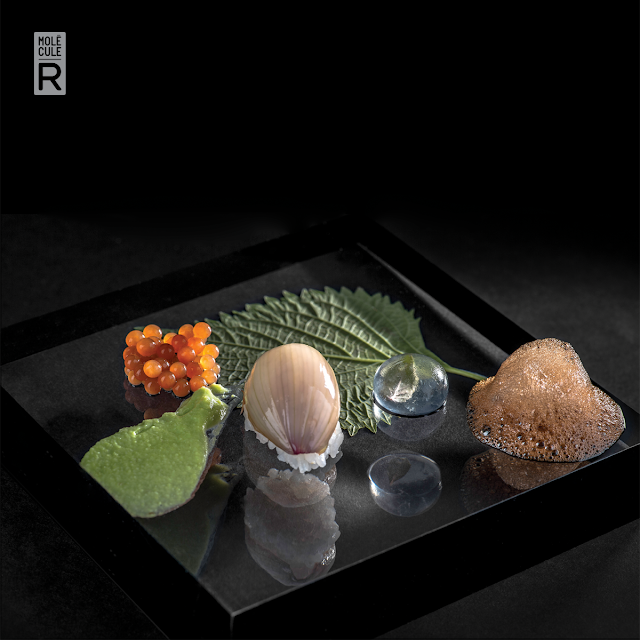MOLECULAR GASTRONOMY: Becoming A Molecular Gastronomist (Part 7)
 |
| source: molecular gastronomy |
Anyone can learn and apply the techniques of molecular gastronomy to basic dishes and preparations. If we re-examine one of the pasta-cooking rules we presented in the introduction, you can see how the application of a little science can save time and energy. Adding oil to boiling water does not, in fact, prevent pasta from clumping. Why? Because oil and water don't mix, which means the oil stays on the surface, far from the cooking noodles. Instead, add a tablespoon of something acidic, such as vinegar or lemon juice. A weak acid inhibits the breakdown of starch and reduces stickiness.
For many people, this will be the extent of their hands-on involvement with molecular gastronomy. But that doesn't mean they won't appreciate the products of molecular gastronomy. Luckily, there are several chefs around the world who readily embrace physics and chemistry in the kitchen. The accompanying table lists some of the most renowned chefs who apply the principles and techniques of molecular gastronomy. But be forewarned: If you decide to visit one of these restaurants, you'll need to make reservations weeks or even months in advance. You should also be prepared to pay handsomely -- $200 a head or more -- for the experience.
If, after dining at one of these molecular gastronomy hotspots, you decide you want to become an avant-garde chef yourself, there are options such as; A few universities are introducing molecular gastronomy programs for postgraduate students. For example, the University of Nottingham has partnered with Heston Blumenthal to create a doctoral track. The three-year course of study provides a unique blend of science and gastronomy, with ideas and inventions devised in the laboratory being tested and refined at the Fat Duck.
Several cooking schools are also incorporating molecular gastronomy in their courses. At the French Culinary Institute in New York City, students can learn about sous vide techniques, hydrocolloids and other applications of food and technology.
Either way, as a student of cooking or as a lover of fine food, molecular gastronomy is sure to open up new vistas -- and awaken your palate to a new definition of delicious.
And ever-since Molecular Gastronomy Indonesia is here to answer all your needs of molecular gastronomy supplies, then you can try to make a molecular gastronomy dish at your home, bring your culinary creativity to the next level and impress your guests with spectacular dishes such as mint caviar beads that burst in the mouth, chocolate spaghetti, lemon foam or tzatziki spheres.
Molecular Gastronomy Indonesia have a various type of molecular gastronomy kits. This "do it yourself" molecular gastronomy kit includes all you need to experiment at home with the molecular techniques seen on top chef and in high-end restaurants, but without the celebrity chef price tag. This all-encompassing kit includes five pre-measured food additives, five specialized molecular tools as well as a 50-recipe DVD that makes molecular gastronomy easy and accessible to all foodies. So what are you waiting for? Go check them out on instagram.com/moleculargastroid for more information.
Source:
science.howstuffworks.com

Comments
Post a Comment